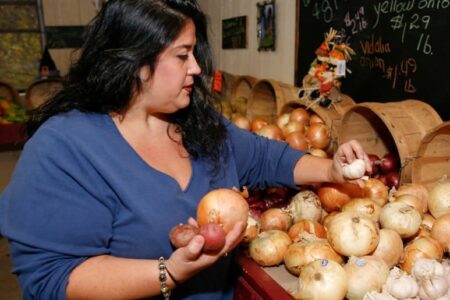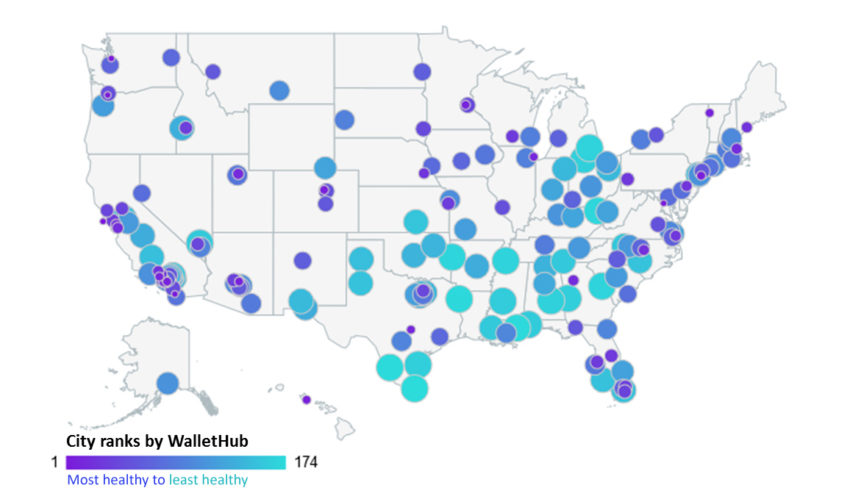
Share On Social!
Two Texas cities—Laredo (95.4% Latino) and Brownsville (93.9% Latino)—rank as the least healthy U.S. cities, according to the 2019 Healthiest & Unhealthiest Cities in America by WalletHub.
The ranking scores 174 large cities based on 42 health indicators.
They look at cost of medical visits, and the number of dieticians and mental health counselors. They also factor in the amount of green space, trails, and healthy restaurants. Healthy food consumption and physical activity also has weight.
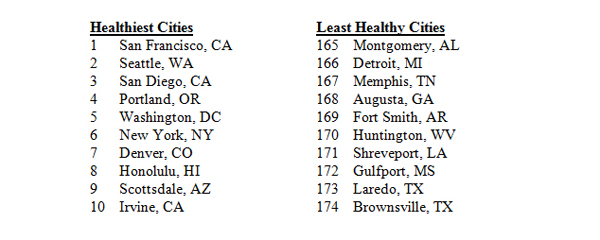 “Some places promote wellness by expanding access to nutritious food and recreational facilities. Others strive to keep healthcare costs affordable for everyone or keep parks clean and well-maintained,” according to WalletHub. “When a city doesn’t take care of these issues, it can be hard to keep up good health.”
“Some places promote wellness by expanding access to nutritious food and recreational facilities. Others strive to keep healthcare costs affordable for everyone or keep parks clean and well-maintained,” according to WalletHub. “When a city doesn’t take care of these issues, it can be hard to keep up good health.”
How did the cities rank?
Most Healthy City: San Francisco
San Francisco scored a 73.2 to rank as the most healthy city.
The 15% Latino city ranked near the top in healthy food and green spaces, according to WalletHub.
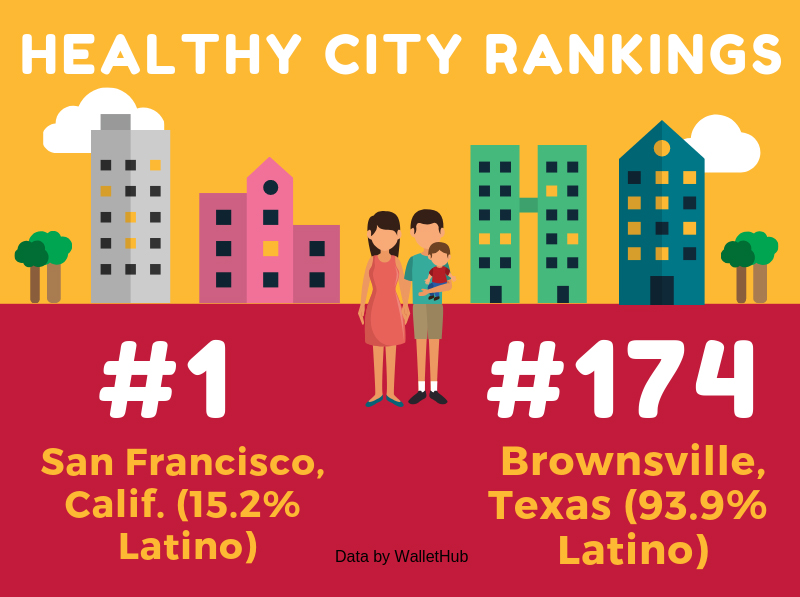 Other big health movements are happening here, too.
Other big health movements are happening here, too.
Pediatrician Dr. Heyman Oo helped start a school intervention to boost mental health and resiliency of immigrant students.
The Mission Economic Development Agency collaborates with others to push more below-market-rate apartment options. They also work to add affordable housing in Latino neighborhoods.
“We have the ability to make it happen,” said Luis Granados, leader of the development agency. “Being on a fixed low income should not mean you are displaced from the neighborhood you helped build over many decades.”
Least Healthy Cities: Laredo & Brownsville
As the least healthy cities, Laredo scored a 25.4 and Brownsville a 24.2.
They ranked poorly in fitness, green spaces, healthy food, and healthcare, according to WalletHub.
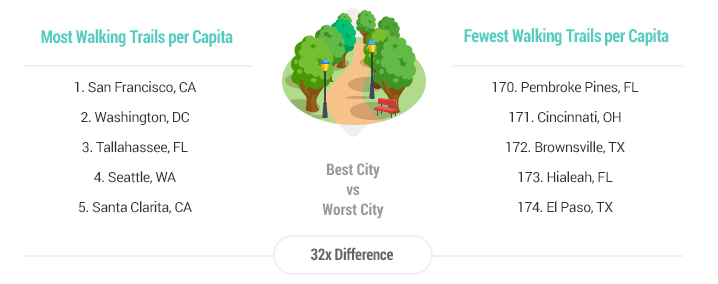 Laredo finished last in a ranking of per-capita mental health counselors and healthy restaurants. Brownsville finished second-to-last in a ranking of per-capita dieticians. They finished third-to-last in walking trails.
Laredo finished last in a ranking of per-capita mental health counselors and healthy restaurants. Brownsville finished second-to-last in a ranking of per-capita dieticians. They finished third-to-last in walking trails.
On the positive side, these two cities are both among the best in “lowest cost of medical visit.”
Leaders in these cities can make improvements, said Dr. Kristin Hocevar of Southern Oregon University.
“Everything from public parks and affordable farmers’ markets, to well-lit and safe walkways, playgrounds, and well-designed urban and suburban spaces can make spending time outside, exercising, and even healthy cooking more appealing,” Hocevar told WalletHub.
See the full ranks at WalletHub.
Improving Health in Laredo & Brownsville
In Brownsville and Laredo, health advocates are working hard to promote health.
The Texas A&M University System and Driscoll Children’s Hospital launched the Global Institute for Hispanic Health a few years ago. It’s based at Driscoll Children’s Hospital in Corpus Christi. It has other campuses in Brownsville, Harlingen, McAllen, Laredo, and Victoria.
The Global Institute brings researchers and communities together to improve Latinos’ access to clinical trials. They also give grants to study diabetes, obesity, and more.
“We are creating strategies to eliminate health care disparities,” said Dr. Carrie Byington of Texas A&M.
Brownsville also established a community advisory board with over 200 members. They oversee programs and policies that engage residents in healthy activities.
Some examples of successful Brownsville initiatives include:
- The Belden Trail. City leaders and advocates turned old train tracks into a public-access hike and bike trail.
- CylocBia. The city’s CycloBia is a free event that temporarily transforms streets into a car-free environment. This enables people to exercise and cycle safely on the streets.
- Tres Angeles Community Garden. Advocates converted an abandoned plot of land into the Tres Angeles Community Garden.
- The Brownsville Farmers’ Market. Health officials, researchers, and community members created a farmers’ market.
- The Tu Salud ¡Si Cuenta! This campaign seeks to prevent obesity.
- Mental Health in Schools. Brownsville students researched mental illness. They observed its impact on their campus. They surveyed their peers. Then they crafted their own 10 big ideas how schools can meet students’ mental health needs.
“Ultimately, we envision a Brownsville known for its culture of health, not its health challenges,” said Dr. Belinda Reininger of the University of Texas School of Public Health in Brownsville.
Community advocates do have power. And place does matter for health.
By The Numbers
33
percent
of Latinos live within walking distance (<1 mile) of a park



